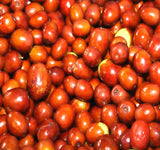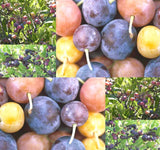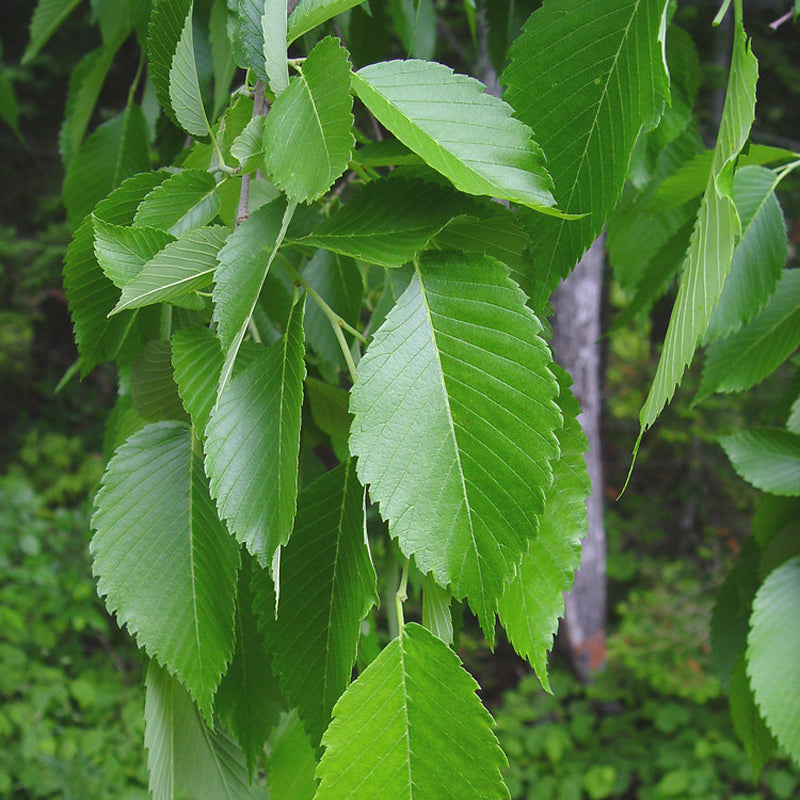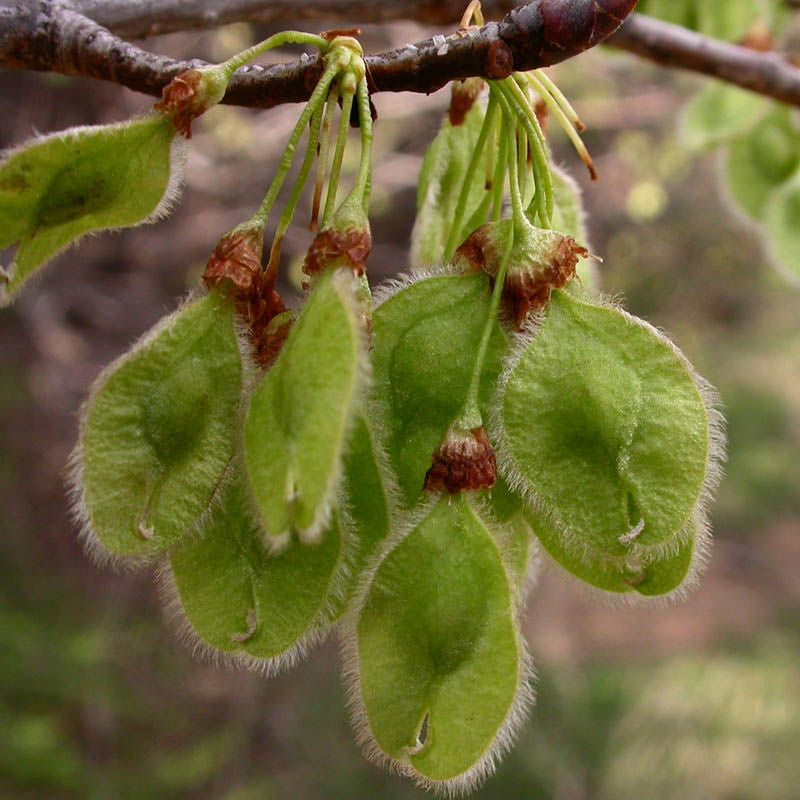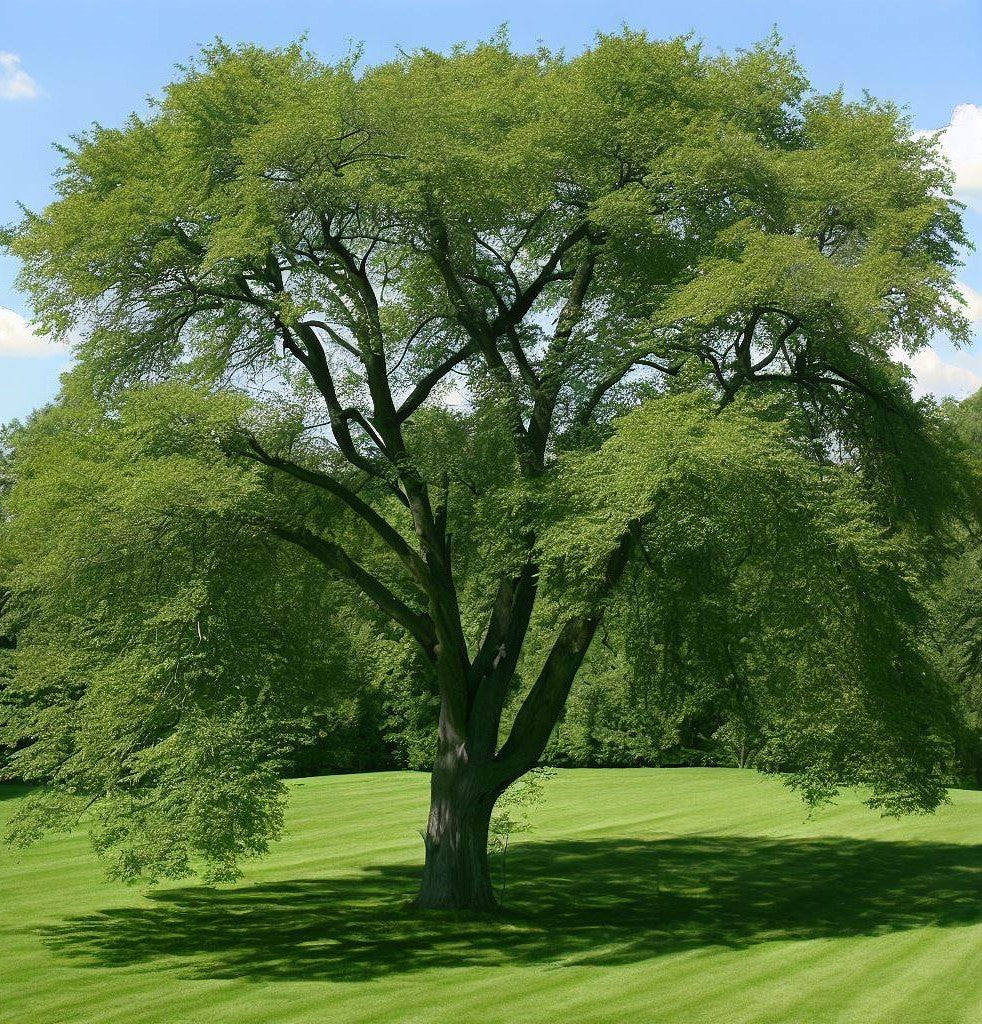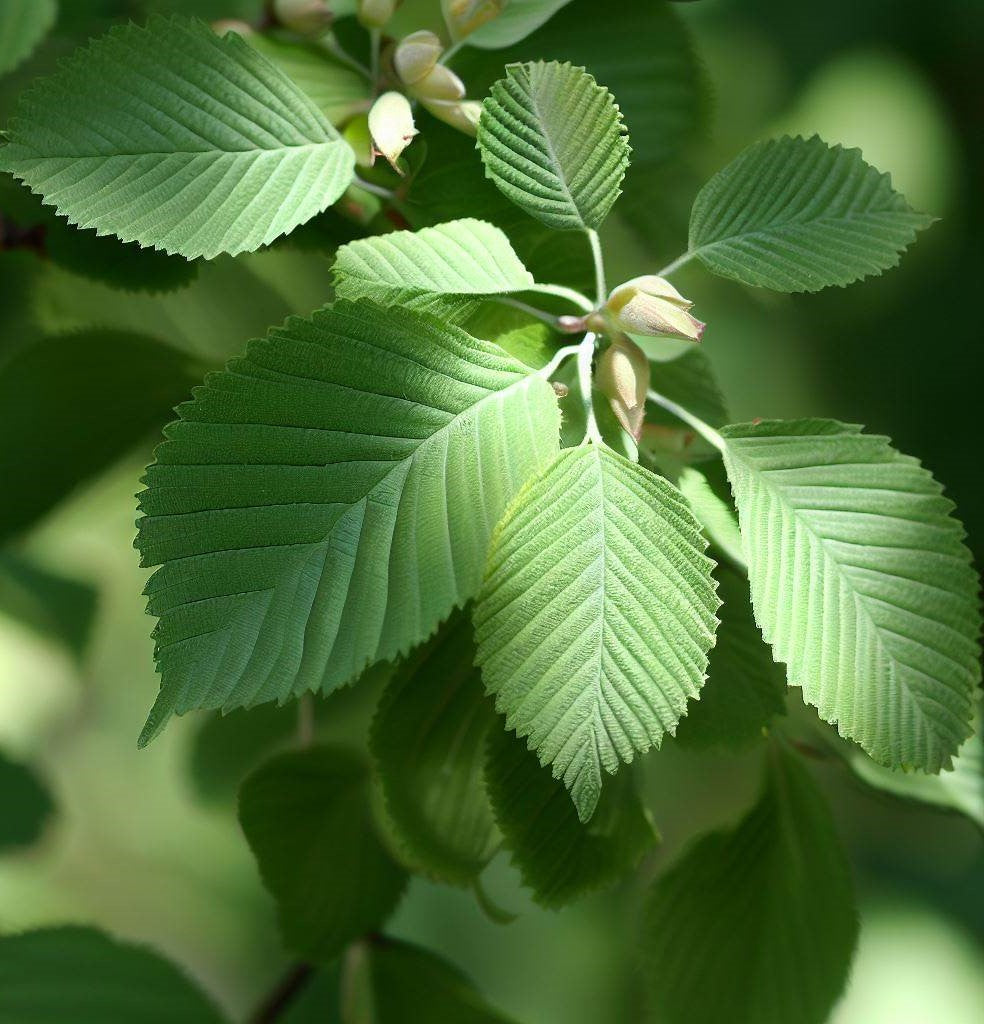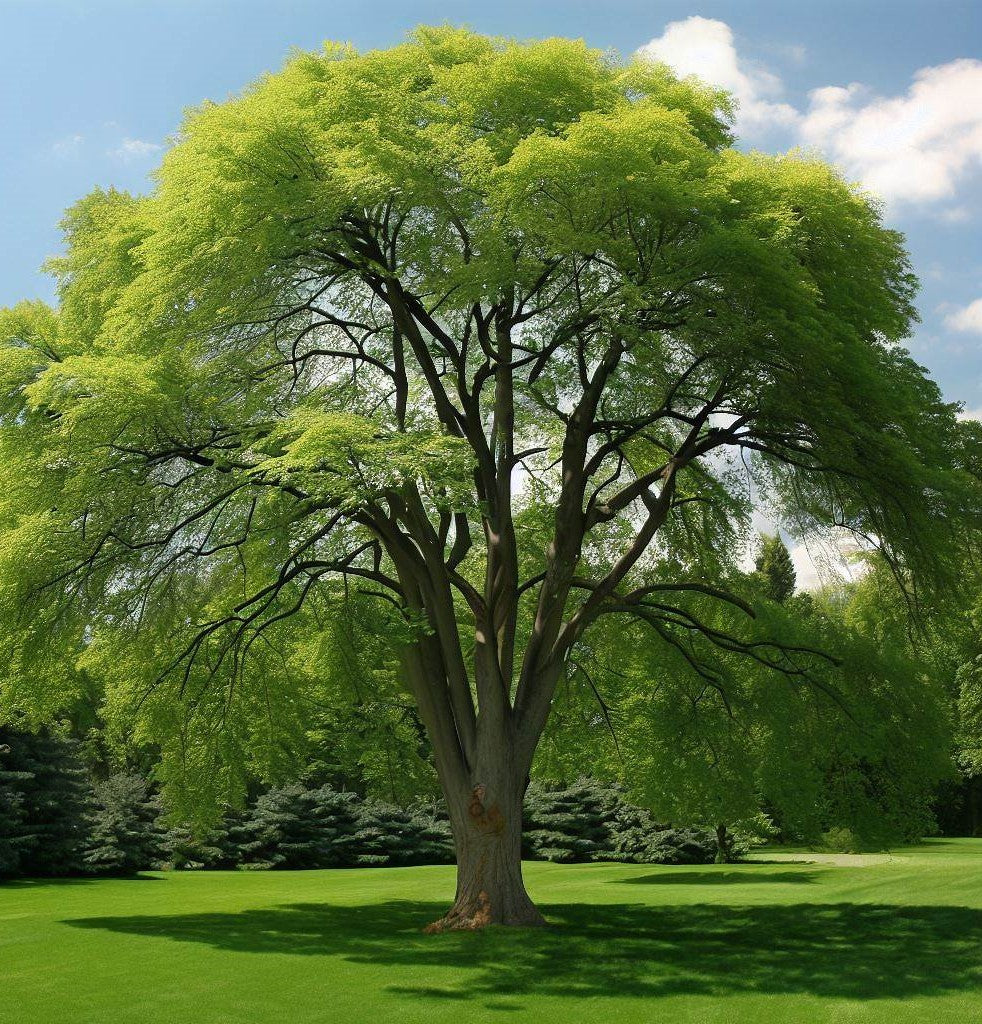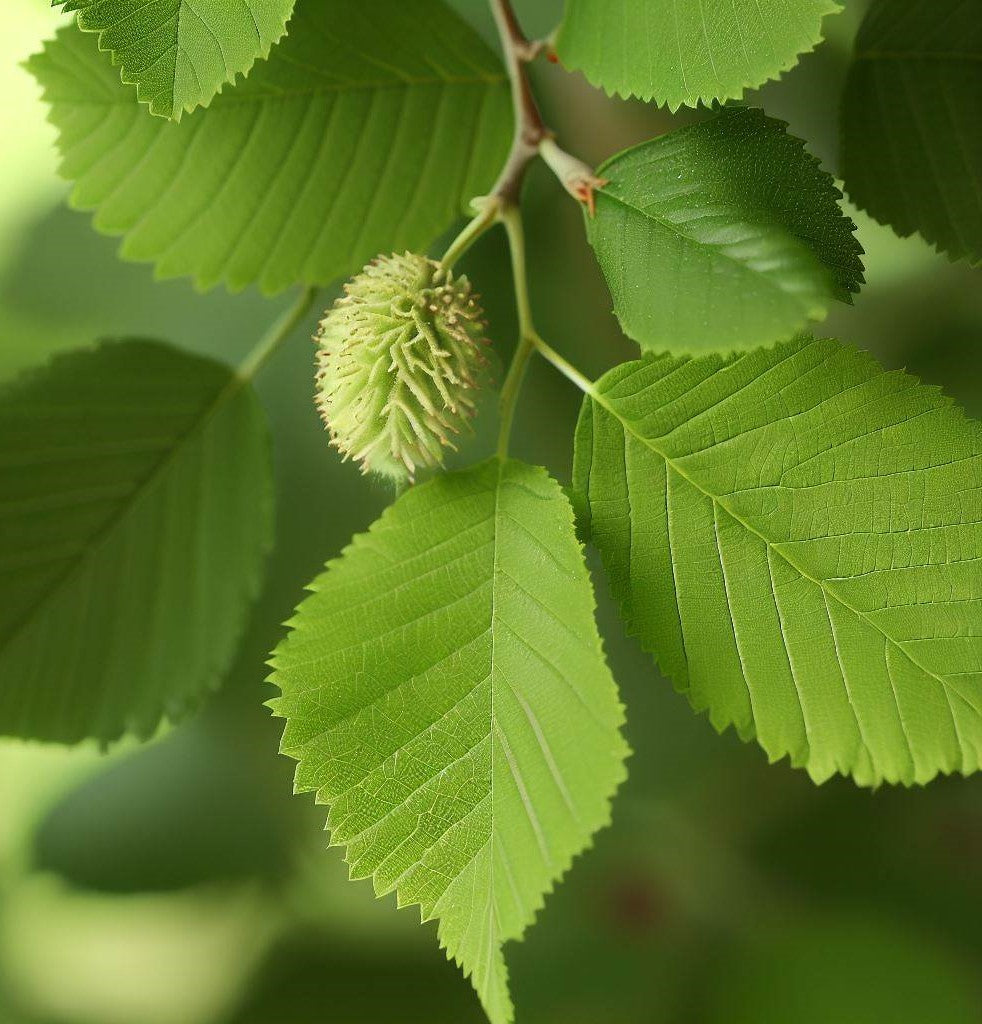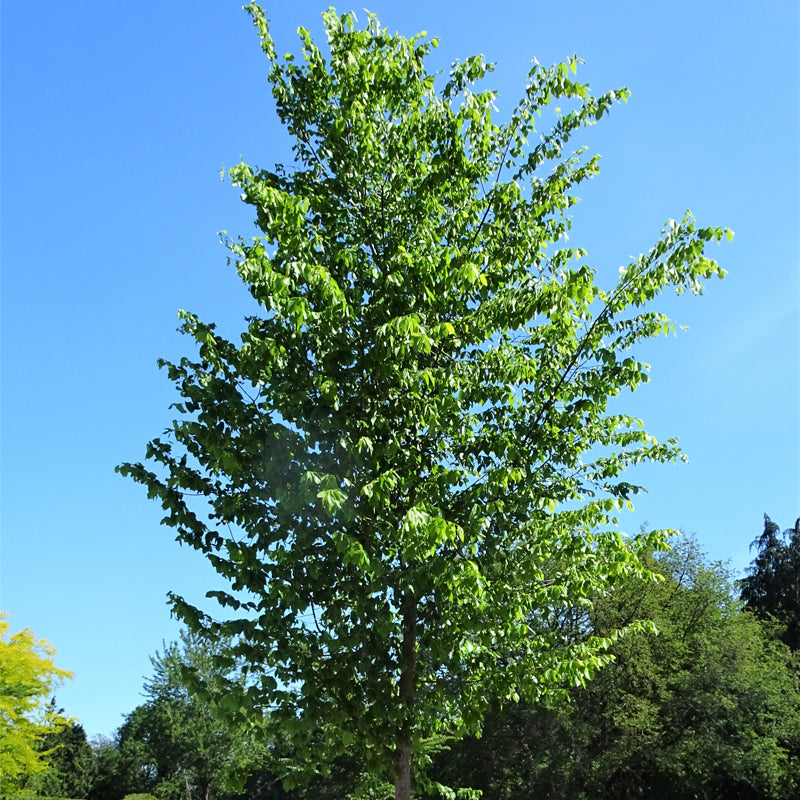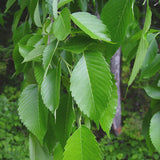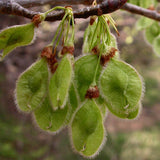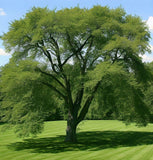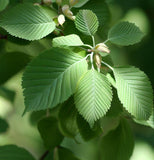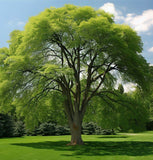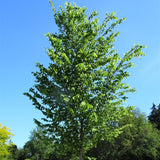Ulmus americana (American Elm, White Elm, Gray Elm, Swan Elm)
Ulmus americana (American Elm, White Elm, Gray Elm, Swan Elm) is a large deciduous tree native to eastern and central North America. It is a well-known and historically significant tree species, valued for its stately appearance and wide canopy. However, it has faced significant challenges due to Dutch elm disease, a fungal infection that has devastated populations of American Elm trees.
Appearance: American Elm is a large tree that can reach heights of 30-40 meters (100-130 feet) with a spread of 15-20 meters (50-65 feet). In favorable conditions, it can grow even taller. The tree has a vase-shaped or rounded crown with ascending branches that form a broad canopy. The bark of the American Elm is dark gray or brown and develops shallow ridges and fissures with age. Its leaves are alternate, oval-shaped, and have double-serrated margins. They are about 7.5-15 centimeters (3-6 inches) long and have a rough texture. The leaves turn golden yellow in the fall before dropping.
Dutch Elm Disease: Dutch elm disease (DED) is a fungal disease caused by the pathogen Ophiostoma novo-ulmi. It is transmitted by elm bark beetles, which carry the fungus from infected trees to healthy ones. DED has had a devastating impact on American Elm populations in North America since the early 20th century. It clogs the water-conducting vessels of the tree, leading to wilting, yellowing, and eventual death of the branches. Efforts have been made to develop disease-resistant cultivars, but the disease remains a significant threat to American Elm trees.
Ecological Importance: American Elm trees provide valuable ecosystem services. They offer shade, reduce erosion, and contribute to the biodiversity of their habitats. The tree's dense foliage provides nesting sites for birds and shelter for other wildlife. Prior to the spread of Dutch elm disease, American Elms were a dominant species in many forests and urban landscapes.
Cultural and Historical Significance: American Elm trees have been highly valued in urban and rural landscapes for their grandeur and aesthetic appeal. They hold historical significance in North America and were widely planted along streets and in parks. Notable examples include the famous "Elm Avenue" in Washington, D.C., which was lined with American Elm trees, and the "Elm City" nickname of New Haven, Connecticut.
Botanical Name : Ulmus americana
Common Name : American Elm, White Elm, Gray Elm, Swan Elm
Height : 80- 100 ft
Spread : 40 ft
Germination Info : Seed does not require a pre-treatment
Hardiness zone : 3-9
Average seed per ounce : Approx. 6250

